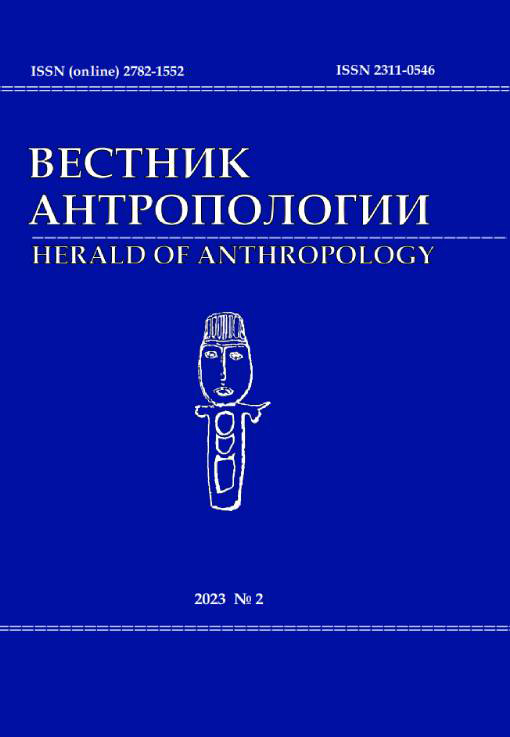Феномен карсикко-залази на Русском Севере
DOI: 10.33876/2311-0546/2023-2/22-34
Ключевые слова:
карсикко и залазь, формы и функции деревьев-знаков, Северная Европа, финно-угры, севернорусская культура, происхождение севернорусского населенияАннотация
Русский Север, как известно, впитал в себя самые разнообразные элементы финно-угорских языков, материальной культуры, обрядности, верований и представлений об окружающем мире. В этом нет ничего удивительного, так как, если посмотреть на карту Евразии, можно увидеть, что Русский Север — это узкая полоса, вклинивающаяся в огромные пространства финно-угорского севера от Норвегии и Северной Швеции до Уральских гор и далее глубоко в Сибирь. Если же взять только Север Европейской части России, то картина будет совершенно иной: территория, называемая сегодня Русским Севером, простирается с запада на восток примерно на тысячу километров. Одним из интереснейших феноменов севернорусской культуры, уходящим своими корнями в глубокую древность, является дерево-знак (в Архангельской и Вологодской областях его называли залазь — от глагола «залазить», в данном случае — на дерево, тогда как идентичное явление у карел и финнов называлось «карсикко», от глагола karsia — «обрубать ветки» или карзать — слово, употреблявшееся во многих севернорусских говорах. Залазь известна в разных местностях и встречается в промысловой практике, в похоронном, свадебном и рекрутском обрядах и т. д. Многие заветные рощи и отдельные почитаемые деревья также были залазями-карсикко. Географически явление охватывает всю территорию Русского Севера от Карельского берега Белого моря до архангельского Лешуконья на границе с Республикой Коми. Если же говорить обо всем Севере и примыкающих к нему местностях, где зафиксировано явление дерева-знака, то начинаясь в Северной Норвегии (Финнмаркен) и Центральной и Северной Швеции, она простирается через Восточную Европу и Поволжье в Сибирь до Якутии и далее зафиксирована в Северной Америке у ряда племен.






















